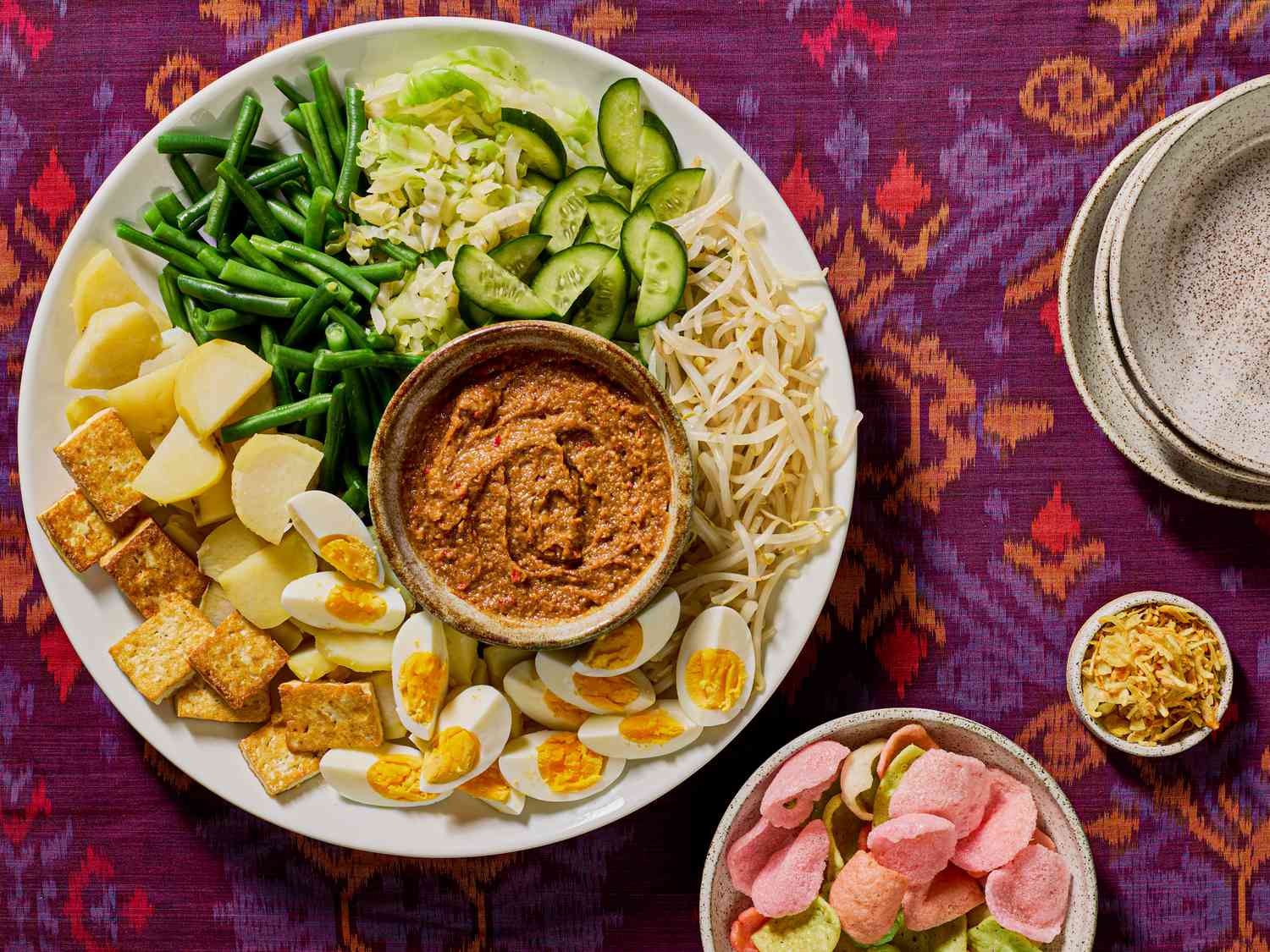
[ad_1]

Why It Works
- Protein-packed hard-boiled eggs and tofu make gado gado satisfying enough for an entire meal.
- Blanching the vegetables helps them retain their fresh color, flavor, and texture.
- Keeping the salad and sauce separate allows diners to mix and match ingredients as desired and prevents the vegetables from getting mushy.
Considered one of five national dishes by the Indonesian government, gado gado is a cherished meal that street vendors, restaurants, and home cooks serve across the country. The simple but hearty dish typically consists of blanched cabbage, mung bean sprouts, green beans, potatoes, fresh cucumber, and lettuce, along with other accouterments like hard-cooked eggs and fried tofu or tempeh. There are no hard rules about what you can and cannot include—any seasonal vegetable is fair game—and many, including myself, garnish the dish with fried shallots. Krupuk, Indonesian crackers made from shrimp, tapioca, or the melinjo nut, often accompany the dish.
Serious Eats / Melati Citrawireja
Many Indonesians believe that gado gado was created to imitate the salads Dutch colonizers ate. The word “gado” comes from “digado” and “menggado,” words in the Jakartan language Betawi meaning “to eat without rice.” Though this is technically true of the dish, many serve gado gado with steamed rice or lontong, compressed rice cakes traditionally wrapped and steamed in banana leaves.
Throughout Indonesia, there are many riffs on gado gado. Like gado gado, the following variations, which go by different names, pair fresh vegetables with savory peanut sauce gussied up with aromatics and spices, such as kencur (sand ginger), makrut lime leaves, and extra garlic, among many other seasonings.
- Pecel: Green beans, cabbage, baby spinach, and mung bean sprouts with steamed rice and peanut sauce.
- Karedok: Green beans, cabbage, cucumbers, mung bean sprouts, lemon basil and peanut sauce made with kencur and shrimp paste.
- Lothek: Green beans, cabbage, baby spinach, mung bean sprouts, boiled eggs, fried tempeh, and peanut sauce.
- Ketroprak: Rice noodles with vegetables, tofu, and peanut sauce.
Gado gado is one of my mum’s go-to dishes for large crowds, and it often makes an appearance at dinner parties. Just before serving, she’d toss all the ingredients together with peanut sauce and bring the gado gado out on a big serving platter. Like my mum, I often prepare the dish for dinner parties—but I prefer to keep the ingredients and sauce separate to prevent the vegetables from getting too soft.
What makes the salad such a great dish for gatherings is also what makes it a wonderful weekday lunch or weeknight dinner: It’s simple, delicious, and relatively easy to prepare in advance. All you have to do is slice up a variety of vegetables (blanching some and keeping others raw), boil some eggs, and whip up a rich peanut sauce to dress it all with. Paired with store-bought fried tofu, it’s a filling, vegetable-packed meal that takes 30 minutes to assemble—which helps explain why it’s such a popular recipe throughout Indonesia’s homes, restaurants, and street stalls.
[ad_2]